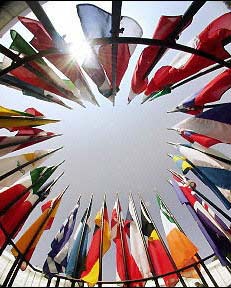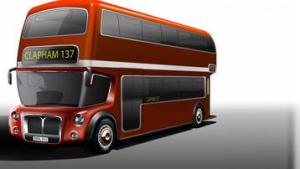You are currently browsing the category archive for the ‘green public purchasing’ category.
The B2B community Agrion just published an interesting article, raising the question: Green Procurement: Are private companies greener than the authorities?
There is at least one area where I see a fundamental difference between Private and Public Green Procurement.
There are 2 dimensions to Sustainable procurement:
– Products (i.e. optimizing the environmental impact of products and services purchased)
– Suppliers (controlling and improving the CSR practices of Suppliers).
It could be summarized saying that Sustainable Procurement is about « what you buy » and « who you buy from ».
I believe that both the Public and Private sector are equally engaged on the 1st dimension. But I see a major difference in the fact that only the Private Sector is really engaged on the 2nd dimension.
Today most of the largest companies have set up structured processes to monitor and develop the Sustainability Practices of their suppliers (involving development of specific Code of Conducts, Self Assessment tools, Audits, and Sustainability Training programs for suppliers).
On the other hand I know very few Public Sector buyers who have set up similar programs to formally assess the sustainability practices of suppliers (not products) they select. In France, most of the time the reason given not to engage with such evaluations, are constraints of the « Code des Marchés Publics » (derived from EU Public Procurement Directive): integrating evaluation criteria’s not directly linked to the « RFQ Scope » could be considered as discriminatory, and in breach of the Public Procurement Code.
As an extreme example a Public Sector Buyer could issue a RFQ for Office Furniture, integrating advanced environmental requirements on materials used, while at the same time ignoring completely the local pollutions at the supplier factory, or potential child labor practices in the supply chain.
As a citizen I find it difficult to understand why the Private Sector would be the only one to carry the bag of improving the Sustainability practices of millions of small and medium enterprises. Driving Sustainability practices in global supply chains is one of our major challenges, and private sector companies can’t be the only one held responsible of the bad environmental, social or ethical practices of suppliers.
What is required to make sure that Public Procurement aims at « greening » suppliers as much as « greening » products? Evolutions in the Public Procurement Code are certainly needed, but I suspect that other changes are necessary as well. Instilling a culture of « Suppliers Relationship Management » in the Public Sector is also probably needed. What else? If you are a practitioner in the Public Procurement we would be very keen to get your views, in the comments section of this blog.
The famous double-decker London imperial buses (The Routemasters) are going to be reintroduced on the streets of London after disappearing in 2005. The 2 projects selected among more than 700 other candidates are the ones from Aston Martin and Capoco. Theses two companies have won this difficult competition thanks to the environmental characteristics of their vehicles even if their prices are anticipated to be higher than more traditional buses.
Transport activities are a major source of pollution and green house gases (GHG). Road transport alone accounts for 84% of CO2 emissions attributable to transport as pointed out in the White Paper on European Transport Policy (click_here).
Public authorities can have a major leverage in encouraging green transport given the amount vehicles purchased across Europe. This is reason why the European Union has long been promoting green procurement in public purchasing. See link on the European Union guidelines on the green procurement of transport services and buses (click_here).
In that context, Boris Johnson, the new mayor of London, has then decided to go for green procurement when reintroducing the Routemasters. The 2 winning projects from Aston Martin and Capoco present vehicles that are said to be low polluters and low CO2 emitters. Solar panels are even integrated in the glass roof for the Aston Martin version, although the efficiency of solar panels in the English capital, known for its fog, still remained to be tested. More details in the following video from the BBC (click_here).


